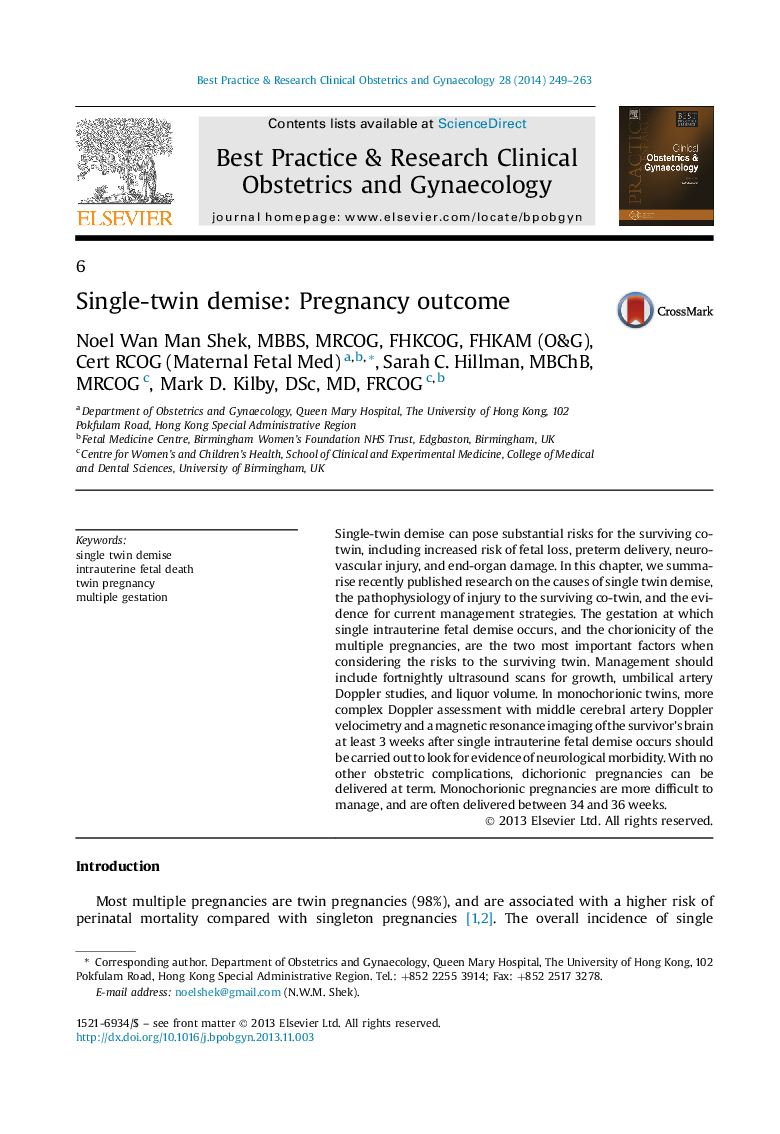| Article ID | Journal | Published Year | Pages | File Type |
|---|---|---|---|---|
| 3907444 | Best Practice & Research Clinical Obstetrics & Gynaecology | 2014 | 15 Pages |
Single-twin demise can pose substantial risks for the surviving co-twin, including increased risk of fetal loss, preterm delivery, neurovascular injury, and end-organ damage. In this chapter, we summarise recently published research on the causes of single twin demise, the pathophysiology of injury to the surviving co-twin, and the evidence for current management strategies. The gestation at which single intrauterine fetal demise occurs, and the chorionicity of the multiple pregnancies, are the two most important factors when considering the risks to the surviving twin. Management should include fortnightly ultrasound scans for growth, umbilical artery Doppler studies, and liquor volume. In monochorionic twins, more complex Doppler assessment with middle cerebral artery Doppler velocimetry and a magnetic resonance imaging of the survivor's brain at least 3 weeks after single intrauterine fetal demise occurs should be carried out to look for evidence of neurological morbidity. With no other obstetric complications, dichorionic pregnancies can be delivered at term. Monochorionic pregnancies are more difficult to manage, and are often delivered between 34 and 36 weeks.
